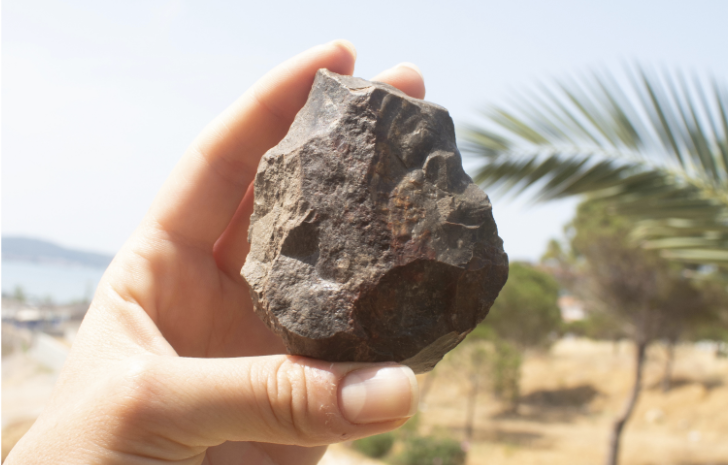
In a groundbreaking archaeological discovery, ancient artifacts unearthed in Turkey may significantly alter our understanding of early human migrations into Europe. The findings, published in The Journal of Island and Coastal Archaeology, suggest that early humans may have traversed a now-submerged land bridge across the Aegean Sea from Turkey to Greece during the Pleistocene period, which ended approximately 12,000 years ago.
The discovery includes 138 artifacts found at ten sites around Ayvalık in western Turkey, providing what researchers describe as “the first systematic dataset from a region previously unexplored in the context of Pleistocene archaeology.” This breakthrough could introduce a new chapter in the history of human dispersals, challenging the prevailing theories that humans and Neanderthals primarily entered Europe via the Levant and Balkan regions.
Unveiling a New Migration Route
The research team, led by Hande Bulut of Düzce University in Turkey, has identified a potential new migration route for early humans. The tools discovered include flaked stone instruments, some from the Levallois tradition, which dates back 450,000 years and is associated with both Neanderthals and Homo sapiens. This suggests that both groups may have utilized this land bridge to explore new territories.
“These findings reveal a previously undocumented Paleolithic presence and establish Ayvalık as a promising locus for future research on early human dispersals in the northeastern Aegean,” said the researchers.
During the Pleistocene, glacial ice sheets caused sea levels to drop, potentially allowing early humans to cross the Aegean Sea. However, dating these tools presents a challenge due to Ayvalık’s coastal geology, which has erased their stratigraphic context, complicating age estimates.
Implications for Archaeological Research
The absence of absolute dates poses interpretive limitations, yet the data significantly contribute to our understanding of Paleolithic occupation in western Anatolia. The findings underscore the region’s potential to contribute to broader debates on Aegean connectivity and technological evolution during the Pleistocene.
“While the absence of absolute dates and stratified contexts poses interpretive limitations, the data contribute significantly to our understanding of Paleolithic occupation in western Anatolia and its role in broader Aegean dynamics,” the team noted.
This discovery invites a reimagining of the journeys undertaken by these ancient humans, whose footprints may now lie beneath the Aegean waves, offering a tantalizing glimpse into the past.
Other Notable Discoveries
Preserved Ecosystems in Amber
Meanwhile, in Ecuador, paleontologists have uncovered amber fossils containing beetles, flies, pollen, and spider webs dating back 112 million years. These fossils, the first of their kind from South America, provide insights into the ecosystems of the supercontinent Gondwana.
“This discovery and the associated plant remains in the amber-bearing rocks enhance our understanding of the Gondwanan arthropod fauna and flora,” said researchers led by Xavier Delclòs of the University of Barcelona.
Badminton in Space
In a novel study, researchers have explored the benefits of playing badminton in space. The sport was found to have positive mental and physical health effects on participants in a simulated lunar base, suggesting it could be a valuable activity for astronauts on long missions.
“These findings underline that badminton holds promise as a feasible and beneficial activity for astronauts,” said authors Aagam Jain and Pushpdant Jain of VIT Bhopal University in India.
Quantum Squeezing Breakthrough
In the realm of quantum physics, scientists have achieved “quantum squeezing” with a nanoparticle for the first time, a significant advancement that could lead to exploring quantum mechanics at a macroscopic scale.
“Our work shows that a levitated nanoparticle offers an ideal platform,” said researchers led by Mitsuyoshi Kamba of the University of Tokyo.
These diverse discoveries highlight the breadth of scientific inquiry, from understanding our ancient past to pushing the boundaries of future technologies.





